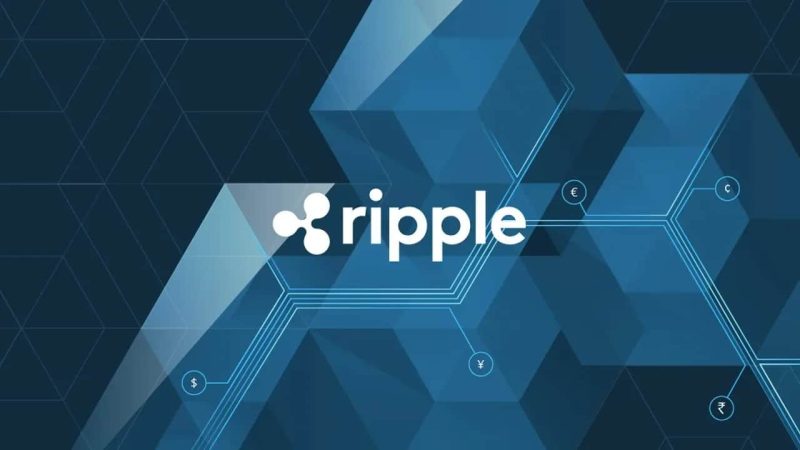A Ripple IPO prospect has been the talk of the crypto market for several months. Such an IPO would add to Ripple’s legitimacy and provide a route for more mainstream investors to join in. An IPO could increase Ripple’s financial resources, but above all, the price of XRP may rise because increased visibility would engender investor confidence.
Amidst numerous speculations, a business consultant and Web3 expert, Jake Claver, commented that an IPO would significantly affect Ripple Labs. His statement explained that such an IPO for Ripple Labs may shake the world like Amazon’s IPO did in 1997.
On the other hand, the company’s CEO, Brad Garlinghouse, explained that while a public listing has been discussed, Ripple has little to no need to pursue such an IPO. He added that the company is strong in cash and is optimistic regarding its ongoing case with the United States SEC.
Ripple IPO Could Transform Fintech, Just Like Amazon Did
There has been much speculation in the cryptocurrency community over a Ripple IPO, which business consultant Jake Claver claims would perhaps not have a different effect from that wrought by Amazon’s IPO in 1997.
Going public in the wake of the Ripple case against the SEC could be even more significant validation for the company and a differentiation factor from other crypto companies. This is similar to how the Coinbase IPO drew attention to the industry in 2021. It may also incite other crypto companies to follow suit, which would signify greater maturity in the market.
First and foremost, Claver said this will position the company better in both the blockchain and fintech verticals. To this end, Ripple has been, in his words, “an award-winning company that provides cross-border payment solutions to over 300 financial institutions of all kinds all over the world”. Like Amazon, once Ripple IPO happens, the company can easily venture into other spaces.
He noted that when Amazon went public, it raised $54 million to expand its book offerings into electronic goods, clothing, and cloud computing services. Drawing from the example of Ripple, Claver cited that funds gathered from an IPO could achieve function expansion and entry into new markets for blockchain.
He also said that Ripple might use the proceeds from a potential IPO to make strategic acquisitions of companies, similar to Amazon’s acquisition of Whole Foods and Twitch. Claver pointed to Ripple’s acquisition of Metaco, which extends its institutional-grade digital asset custody services, as one that would put it on its way to making a more decisive play for significant market share.
Will Ripple IPO Drive Blockchain Adoption?
Money from a Ripple IPO might also further accelerate the company’s research and development, leading to advancements on the XRP Ledger recently mentioned even by Elon Musk. The IPO would also help new uses such as smart contracts, tokenized assets, and CBDCs—a strategic move that could place Ripple at the heart of considerable growth and innovation in the changing face of finance.
Claver underlined how such a direct listing or IPO would provide another strong foothold for Ripple in the blockchain and fintech sectors, alluding to Ripple’s “more than 300-strong network of financial institutions currently leveraging its cross-border payment solutions.”
He added that a Ripple IPO would finally give the company the war chest to scale business operations, expand into more markets, and execute strategic acquisitions, just as Amazon had done by buying Whole Foods and Twitch to diversify its portfolio further.
Garlinghouse: Ripple is Strong even without an IPO
Be that as it may, recently, CEO Brad Garlinghouse commented on the company’s future regarding the current regulatory landscape, crypto ETFs, and even a Ripple IPO. He firstly clarified that while a public listing has been discussed, Ripple has little to no need to pursue such an IPO given its strong cash positioning and ongoing case with the United States SEC.
He said that the challenges faced by the current SEC position on XRP downplayed the agency’s moves as overreaching despite the recent court ruling cemented that XRP itself was not a security. At the same time, he hinted that a change in leadership at the top of the SEC might lead to better regulations for the industry.
Garlinghouse was also very optimistic about the future of crypto-based ETFs He said such products, like the XRP ETF, would not be left in the backwater for long. Instead, they would come into the mainstream, much like Bitcoin ETFs have done. He cited rising interest in crypto-based ETFs as evidence of sector maturity and predicted further developments in this area.
Speaking about Ripple’s stablecoin, he indicated that their frequent use of USDT and USDC influenced the launch of RLUSD. He also suggested that the SEC’s ongoing appeal against Ripple is a tactic to obstruct the approval of XRP ETFs.
While the company still relies on other stablecoins for on-demand liquidity services, it plans to transition towards using RLUSD. Part of the big vision is a deeper positioning of Ripple’s stablecoin within its chain of payments meant to further expand functionality and liquidity within the XRP ecosystem, including the Ripple IPO one day.
The post How Could a Ripple IPO Impact the Crypto Market? appeared first on CoinGape.

